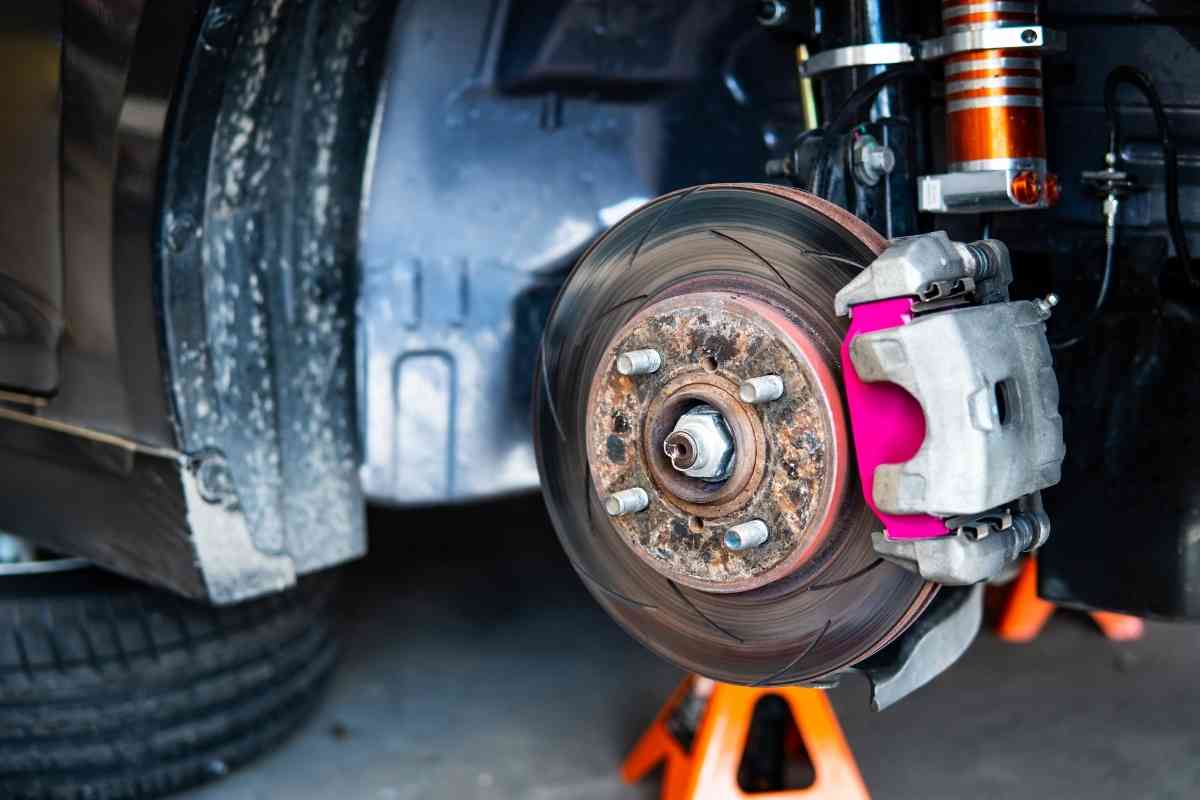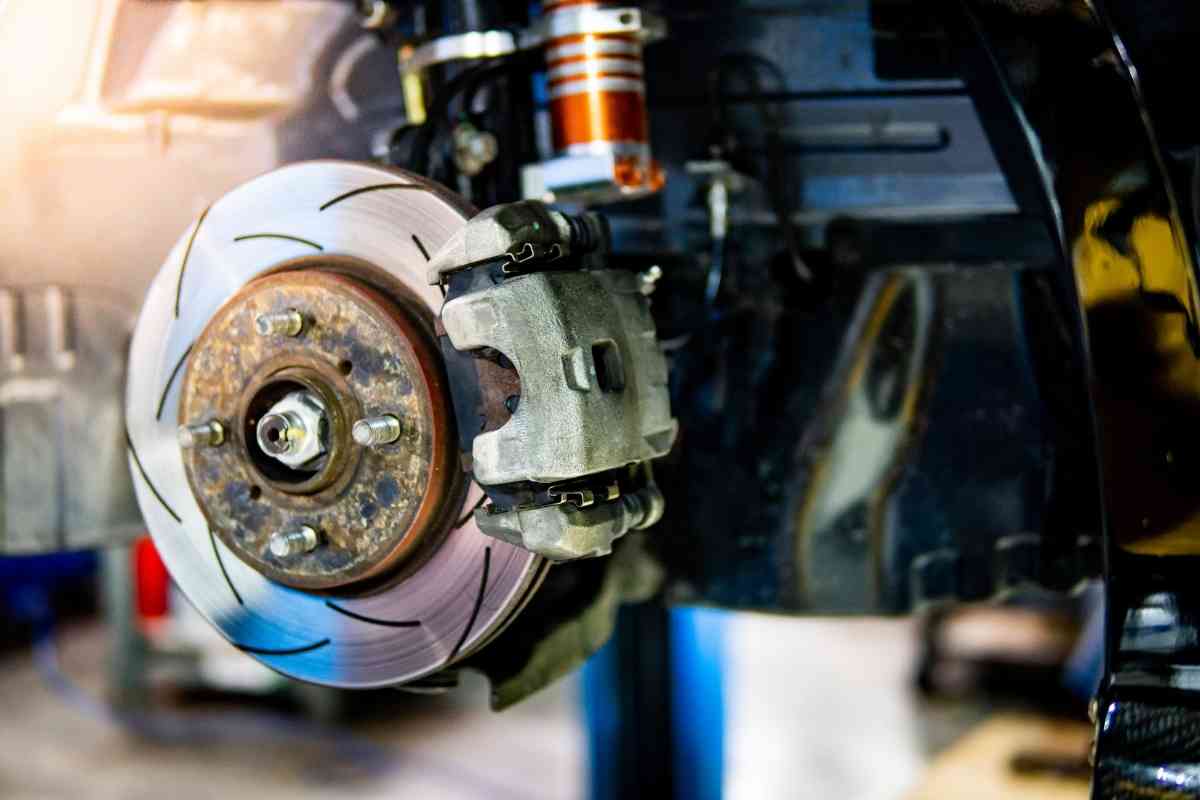How long can you drive with a bad wheel bearing? It’s a question that many car owners face, especially when they hear concerning noises coming from their wheels. Wheel bearings are essential components that allow your wheels to rotate smoothly, and when they fail, the consequences can be serious. From a grinding noise to a complete wheel failure, a bad wheel bearing can significantly impact your vehicle’s performance and safety.
Understanding the function of wheel bearings, recognizing the signs of a failing bearing, and considering the factors that influence how long you can drive with a damaged bearing are crucial steps in ensuring your safety and avoiding potential damage to your vehicle.
Understanding Wheel Bearings
Wheel bearings are crucial components in a vehicle’s suspension system, enabling smooth and efficient wheel rotation while supporting the weight of the vehicle. They act as the interface between the wheel hub and the axle, allowing the wheel to spin freely while maintaining a stable connection.
Types of Wheel Bearings
Wheel bearings come in various types, each with its unique design and characteristics. The most common types include:
- Ball Bearings: These bearings consist of a set of steel balls that rotate between an inner and outer raceway. Ball bearings are known for their low friction and high load capacity, making them suitable for a wide range of applications.
- Roller Bearings: These bearings utilize cylindrical rollers that rotate between the inner and outer raceways. Roller bearings offer higher load capacity compared to ball bearings, making them ideal for heavy-duty vehicles.
- Tapered Roller Bearings: These bearings use tapered rollers that are arranged in a conical shape. Tapered roller bearings can handle both radial and axial loads, making them suitable for applications that require both types of support.
Consequences of Faulty Wheel Bearings
A faulty wheel bearing can have significant consequences, affecting both the vehicle’s performance and safety. The most common signs of a failing wheel bearing include:
- Grinding or roaring noise: As the bearing wears down, the metal components start to rub against each other, producing a distinctive grinding or roaring noise that intensifies with speed.
- Vibrations: A faulty wheel bearing can cause vibrations in the steering wheel, especially at higher speeds. This is due to the uneven rotation of the wheel caused by the damaged bearing.
- Uneven tire wear: A failing wheel bearing can lead to uneven tire wear, as the wheel is not rotating smoothly. This can result in premature tire replacement and affect the vehicle’s handling.
- Loss of control: In extreme cases, a completely failed wheel bearing can lead to a loss of control over the vehicle. This is because the wheel may seize up, causing the vehicle to swerve or pull in an unexpected direction.
Recognizing Signs of a Bad Wheel Bearing

A bad wheel bearing can cause a range of symptoms that can affect your vehicle’s handling and safety. It’s important to understand the common signs so you can get your vehicle inspected and repaired as soon as possible.
Common Symptoms of a Bad Wheel Bearing
The symptoms of a bad wheel bearing can vary depending on the severity of the damage. However, some common signs include:
- Noise: A bad wheel bearing often produces a grinding, humming, or roaring sound that gets louder as the bearing deteriorates. The noise may be more pronounced when turning or driving over bumps. This is often the most obvious sign of a failing wheel bearing. The sound can change depending on the severity of the damage, with a rumbling sound often indicating a more advanced stage of failure.
- Vibration: A bad wheel bearing can cause a vibration in the steering wheel, particularly at higher speeds. The vibration can be felt in the floorboard or even the entire vehicle, depending on the severity of the damage. A vibration that intensifies at certain speeds, particularly when turning, is a clear indication of a problem.
- Uneven Tire Wear: A bad wheel bearing can cause uneven tire wear, as the wheel may not be rotating smoothly. Premature tire wear, especially on one side of the vehicle, is a possible sign of a failing wheel bearing. You may notice that one tire wears out faster than the others.
- Loose Steering Wheel: A bad wheel bearing can make the steering wheel feel loose or sloppy. This is due to the bearing’s inability to maintain a smooth and consistent rotation. A loose steering wheel can be a safety hazard, as it makes it difficult to control the vehicle.
- Vehicle Pulling to One Side: A bad wheel bearing can cause the vehicle to pull to one side, especially when driving on a straight road. This is because the wheel is not rotating smoothly, causing the vehicle to drift. The pulling sensation may be more noticeable at certain speeds.
- Shaking or Wobbling: A bad wheel bearing can cause the vehicle to shake or wobble, especially at higher speeds. This is due to the bearing’s inability to support the weight of the vehicle, causing the wheel to wobble. The shaking or wobbling may be more noticeable when turning.
Factors Influencing Driveability with a Bad Bearing

The longevity of your drive with a faulty wheel bearing is not a fixed timeline. Several factors play a crucial role in determining how long you can continue driving before the bearing completely fails. Understanding these factors can help you make informed decisions about your vehicle’s safety and maintenance.
Impact of Driving Speed
The speed at which you drive significantly influences the lifespan of a damaged wheel bearing. Higher speeds amplify the forces exerted on the bearing, accelerating its deterioration. At higher speeds, the bearing experiences increased centrifugal force, causing the balls or rollers to spin faster and with greater force against the raceways. This accelerated motion increases friction and heat, leading to faster wear and tear.
Additionally, the impact of road imperfections is amplified at higher speeds, further stressing the bearing.
Role of Road Conditions
The quality of the road surface can have a considerable impact on the longevity of a damaged bearing. Rough roads, potholes, and uneven surfaces can put additional stress on the bearing, accelerating its deterioration. The constant jarring and vibrations from driving on such roads can loosen the bearing components, leading to premature failure. Conversely, smooth roads with minimal imperfections will minimize the impact on the bearing, extending its lifespan.
Influence of Vehicle Load
The weight carried by your vehicle also influences the lifespan of a damaged bearing. Heavier loads place greater stress on the bearing, leading to faster wear and tear. The increased weight amplifies the forces acting on the bearing, causing it to work harder and experience increased friction. This can lead to premature failure, especially if the bearing is already compromised.
Safety Considerations
Driving with a bad wheel bearing poses significant safety risks, potentially leading to accidents and injuries. The deterioration of the bearing can cause a range of issues that compromise vehicle control and stability, making it crucial to address the problem immediately.
Wheel Detachment
A severely damaged wheel bearing can lead to the wheel detaching from the vehicle while driving. This happens when the bearing completely fails, causing the wheel to spin freely without any connection to the axle. The wheel can then detach from the vehicle, potentially causing a catastrophic accident.
A detached wheel can roll away uncontrollably, potentially causing damage to other vehicles or pedestrians.
Impact on Vehicle Handling and Control, How long can you drive with a bad wheel bearing
A failing wheel bearing can significantly impact vehicle handling and control, making it difficult to steer and brake effectively.
- Reduced Steering Control: A damaged bearing can cause the wheel to wobble or shake, making it difficult to maintain a straight path. The steering wheel may feel loose or unresponsive, requiring more effort to steer.
- Increased Braking Distance: A failing bearing can affect the brake system’s efficiency, increasing braking distance and making it harder to stop in time. The wheel may lock up or skid, making it difficult to control the vehicle during braking.
- Noise and Vibration: A failing wheel bearing often produces a loud grinding or rumbling noise, especially at higher speeds. The vibration can be felt in the steering wheel and the entire vehicle.
Recommended Action: How Long Can You Drive With A Bad Wheel Bearing

The sound of grinding, clunking, or roaring from your car’s wheels should never be ignored. If you suspect a bad wheel bearing, it’s crucial to take immediate action to prevent further damage and ensure your safety on the road. Your car’s wheel bearings are essential components that support the weight of your vehicle and allow the wheels to rotate smoothly.
A damaged wheel bearing can lead to a dangerous situation, so it’s important to address the issue promptly.
Immediate Inspection and Repair
A visual inspection can often reveal signs of a failing wheel bearing, such as excessive play in the wheel, grease leaks, or visible damage to the bearing itself. However, a thorough inspection by a qualified mechanic is essential to determine the extent of the damage and ensure the safety of your vehicle.A damaged wheel bearing should be repaired as soon as possible.
Ignoring the issue can lead to:
- Further damage to the bearing and surrounding components, leading to more expensive repairs.
- Complete failure of the bearing, resulting in a loss of control of the vehicle.
- Increased wear and tear on other components, such as tires and suspension.
- A potentially dangerous situation for you and other road users.
Consequences of Ignoring the Issue
Driving with a bad wheel bearing can have serious consequences, including:
- Loss of Control: A completely seized bearing can cause the wheel to lock up, leading to a loss of control and potentially a serious accident.
- Tire Damage: A damaged bearing can cause uneven tire wear, leading to premature tire failure.
- Suspension Damage: A failing bearing can put additional stress on the suspension system, leading to premature wear and tear.
- Safety Hazard: A damaged wheel bearing can cause the wheel to detach from the vehicle, posing a serious safety hazard to you and other road users.
In conclusion, driving with a bad wheel bearing is a risky endeavor that can lead to serious consequences. While you might be able to drive for a short distance with a minor issue, it’s essential to address the problem immediately to prevent further damage and ensure your safety. The symptoms of a bad wheel bearing are clear, and the potential risks are significant.
If you suspect a problem, don’t hesitate to seek professional help. Your safety and the well-being of your vehicle depend on it.
Q&A
What are the most common symptoms of a bad wheel bearing?
The most common symptoms include a grinding or roaring noise that gets louder when you turn, a vibration in the steering wheel, and a feeling of looseness or play in the steering.
Is it safe to drive with a bad wheel bearing?
It is not safe to drive with a bad wheel bearing. The bearing could fail completely, leading to a loss of control of the vehicle.
How long can I drive with a bad wheel bearing before it fails completely?
There is no definitive answer to this question, as the lifespan of a bad bearing depends on several factors, including the severity of the damage, driving conditions, and vehicle load.
What happens if I ignore a bad wheel bearing?
Ignoring a bad wheel bearing can lead to a complete wheel failure, which could result in a serious accident.